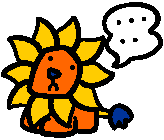
-----------------------------------------------
#72 サーカスやロデオのどこがいけないのですか?
-----------------------------------------------
動物を人間の娯楽のための道具として使うことは、動物に対して払わ
れるべき敬意を払わずに動物を扱うということです。動物の中で最も知
能が高く人間と同じ類に属するほ乳類をこのような形でおとしめるとい
うのは、前世紀以前の人間たちがしてきたことを繰り返しているわけで
す。
昔の人たちは、動物の知性、感受性、感情、社会的欲求などに対する
知識を全く持っていませんでした;彼らは動物を野蛮な獣としてしか見
ていなかったのです。そうした時代からの古い伝統を継続するというこ
とは、たとえ動物を虐待してはいないとしても、人間は無知で無神経な
ままでいる方がいいのだと言っているようなものです。
しかも、これらの見せ物では、まぎれもない動物虐待が行われていま
す。
ロデオでは動物が恐怖におびえるか痛みで苦しむことで、初めて見せ
物としての価値が出ます。
サーカスの動物たちが最も苦しむのは、見せ物が始まる前と終わった
後です。調教されている間は虐待を受け、輸送されている間も肉体的、
精神的苦痛にさらされるのです。動物たちは、時には酷暑や極寒の中を、
毎年、何万マイルも旅させられます。トラたちは狭苦しい檻につめこま
れ、象たちは不潔な貨車の中で鎖に繋がれて運ばれます。興行主にとっ
て、動物は使い捨ての商売道具にすぎないのです。
DVH
デイヴィッド・カウルズ - ハマーは『動物の権利のマニュアル』
の中で、サーカスに関して次のように書いています。
『当然のことながら、動物に芸をさせるには相当な「説得力」が必
要とされる。そのためにサーカスでは、様々な手法を用いている。
食事を与えない、仲間と隔離する、おどす、口輪をはめる、薬物
を与える、罰と褒美、足かせをはめる、むちで打つ、電気ショッ
ク、棒で叩く、銃声で脅すなどである....
サーカスの動物たちは動物園の動物たちと同じような精神的、
肉体的な苦痛を受けており、反復行動などもみせる...
肉体的な症状としては、足かせによる外傷、ヘルペス、肝臓疾
患、腎臓病などがあり、死に至ることもある...
多くの動物が肉体的にも精神的にも病気になってしまうのだ』
DG
アメリカのロデオは、投げ縄、あばれ馬乗り、子牛をひねり倒す、と
いったイベントによって構成されています。観客が実際に、動物たちの
パフォーマンスを目にするのは8秒そこそこですが、誰の目にもふれな
い練習が何百時間にも渡って続けられているのです。まともな空調もな
いことが多い乗り物で、絶え間なく移動させられることからくるストレ
ス、あるいは移動の際のひどい積み下ろし方や、不適切な餌や水のやり
方なども、こうした動物たちが置かれている悲惨な境遇の一因です。
騎手の得点の半分は馬や牛がどれだけ跳びはねるかによって決まるの
で、騎手は動物の性器のあたりにきつく巻き付けたバッキング・ストラ
ップというストラップを引っ張って動物を跳ね上がらせ、激しいロディ
オを演出しようとします。
動物たちを荒々しく暴れさせるために電気ショックを与える突き棒や
鋭利な拍車も使われます。動物たちが受ける傷は挫傷にはじまり、骨折
や身体の麻痺、気管の断絶、そして死に至るものがあります。時速50
キロで走っている子牛を突然強制的に止まらせると、脊髄は折れてしま
います。ロデオのイベントの中で動物たちは地面にたたきつけられます
が、そのせいで内臓が破裂し、ゆっくりと苦しみ悶えながら死ぬことも
よくあります。
米国農務省の食肉検査官を30年間勤めた獣医である、C.G.ヘイ
バー博士は、こう言っています:
「ロデオから精肉工場に送られてきた家畜の中には、挫傷があまりにも
ひどすぎて、肉に皮がちゃんとくっついているのは頭部と首と足と腹
部だけだったのを見たことがある。肋骨が6〜8本折れていたり、肺
に穴があいている死骸も見たことがある。肉から離れてしまった皮の
下に2、3ガロンもの血がたまっていたこともある。」 <M>
JSD

...............



-----------------------
#72 What is wrong with circuses and rodeos?
-----------------------
To treat animals as objects for our amusement is to treat them without
the respect they deserve. When we degrade the most intelligent fellow
mammals in this way, we act as our ancestors acted in former centuries.
They knew nothing about the animals' intelligence, sensitivities,
emotions, and social needs; they saw only brute beasts. To continue such
ancient traditions, even if no cruelty were involved, means that we insist
on remaining ignorant and insensitive.
But the cruelty does exist and is inherent in these spectacles. In
rodeos, there is no show unless the animal is frightened or in pain. In
circuses, animals suffer most before and after the show. They endure
punishment during training and are subjected to physical and emotional
hardships during transportation. They are forced to travel tens of
thousands of miles each year, often in extreme heat or cold, with tigers
living in cramped cages and elephants chained in filthy railroad cars. To
the entrepreneurs, animals are merely stock in trade, to be replaced when
they are used up.
DVH
David Cowles-Hamar writes about circuses as follows in his "The Manual
of Animal Rights":
Not surprisingly, a considerable amount of "persuasion" is required
to achieve these performances, and to this end, circuses employ
various techniques. These include deprivation of food, deprivation
of company, intimidation, muzzling, drugs, punishment and reward
systems, shackling, whips, electronic goads, sticks, and the noise
of guns...Circus animals suffer similar mental and physical problems
to zoo animals, displaying stereotypical behavior...Physical symptoms
include shackle sores, herpes, liver failure, kidney disease, and
sometimes death...Many of the animals become both physically and
mentally ill.
DG
The American rodeo consists of roping, bucking, and steer wrestling
events. While the public witnesses only the 8 seconds or so that the
animals perform, there are hundreds of hours of unsupervised practice
sessions. Also, the stress of constant travel, often in improperly
ventilated vehicles, and poor enforcement of proper unloading, feeding,
and watering of animals during travel contribute to a life of misery for
these animals.
As half a rider's score is based on the performance of the bucking horse
or bull, riders encourage a wild ride by tugging on a bucking strap that
is squeezed tightly around the animal's loins. Electric prods and raking
spurs are also used to stimulate wild behavior. Injuries range from
bruises and broken bones to paralysis, severed tracheas, and death. Spinal
cords of calves can be severed when forced to an abrupt stop while
traveling at 30 mph. The practice of slamming these animals to the ground
during these events has caused the rupture of internal organs, leading to a
slow, agonizing death.
Dr. C. G. Haber, a veterinarian with thirty years experience as a meat
inspector for the USDA, says: "The rodeo folks send their animals to the
packing houses where...I have seen cattle so extensively bruised that the
only areas in which the skin was attached was the head, neck, legs, and
belly. I have seen animals with six to eight ribs broken from the spine
and at times puncturing the lungs. I have seen as much as two and three
gallons of free blood accumulated under the detached skin."
JSD




